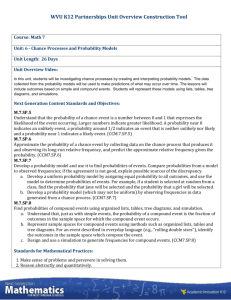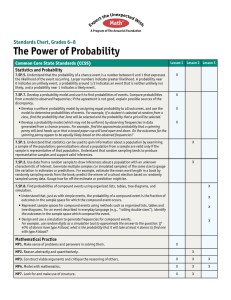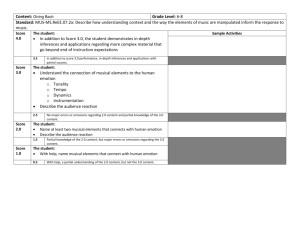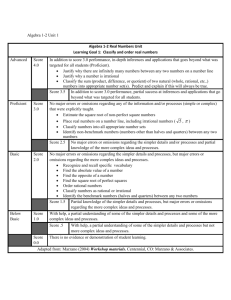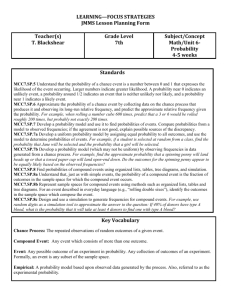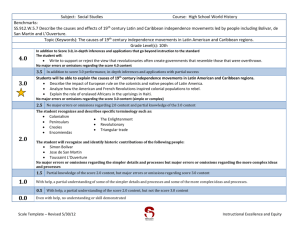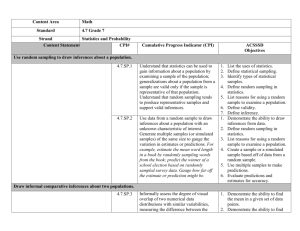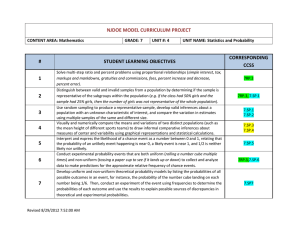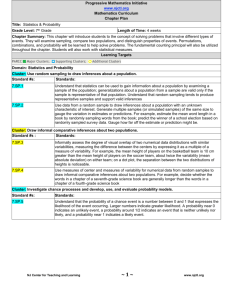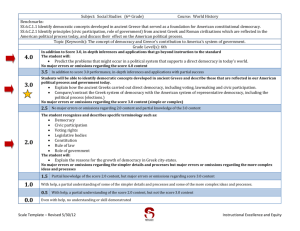714 - SCPS Secondary math
advertisement
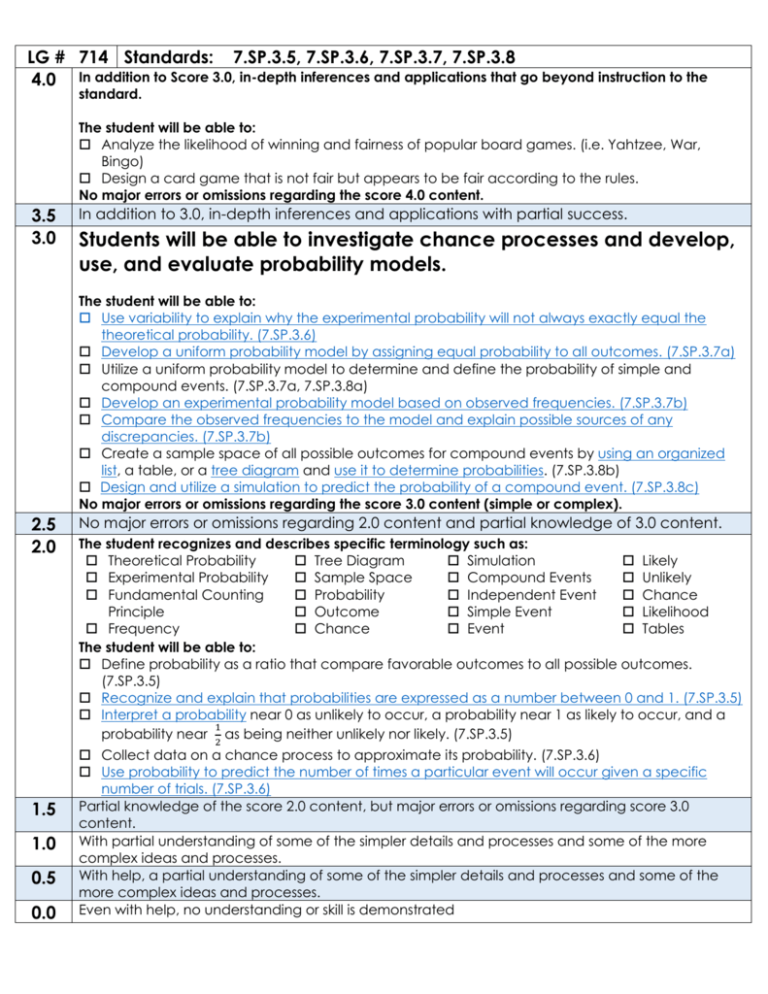
LG # 714 Standards: 7.SP.3.5, 7.SP.3.6, 7.SP.3.7, 7.SP.3.8 4.0 In addition to Score 3.0, in-depth inferences and applications that go beyond instruction to the standard. The student will be able to: Analyze the likelihood of winning and fairness of popular board games. (i.e. Yahtzee, War, Bingo) Design a card game that is not fair but appears to be fair according to the rules. No major errors or omissions regarding the score 4.0 content. 3.5 3.0 In addition to 3.0, in-depth inferences and applications with partial success. Students will be able to investigate chance processes and develop, use, and evaluate probability models. The student will be able to: Use variability to explain why the experimental probability will not always exactly equal the theoretical probability. (7.SP.3.6) Develop a uniform probability model by assigning equal probability to all outcomes. (7.SP.3.7a) Utilize a uniform probability model to determine and define the probability of simple and compound events. (7.SP.3.7a, 7.SP.3.8a) Develop an experimental probability model based on observed frequencies. (7.SP.3.7b) Compare the observed frequencies to the model and explain possible sources of any discrepancies. (7.SP.3.7b) Create a sample space of all possible outcomes for compound events by using an organized list, a table, or a tree diagram and use it to determine probabilities. (7.SP.3.8b) Design and utilize a simulation to predict the probability of a compound event. (7.SP.3.8c) No major errors or omissions regarding the score 3.0 content (simple or complex). 2.5 2.0 No major errors or omissions regarding 2.0 content and partial knowledge of 3.0 content. The student recognizes and describes specific terminology such as: Theoretical Probability Tree Diagram Simulation Likely Experimental Probability Sample Space Compound Events Unlikely Fundamental Counting Probability Independent Event Chance Principle Outcome Simple Event Likelihood Frequency Chance Event Tables The student will be able to: Define probability as a ratio that compare favorable outcomes to all possible outcomes. (7.SP.3.5) Recognize and explain that probabilities are expressed as a number between 0 and 1. (7.SP.3.5) Interpret a probability near 0 as unlikely to occur, a probability near 1 as likely to occur, and a 1 probability near as being neither unlikely nor likely. (7.SP.3.5) 2 1.5 1.0 0.5 0.0 Collect data on a chance process to approximate its probability. (7.SP.3.6) Use probability to predict the number of times a particular event will occur given a specific number of trials. (7.SP.3.6) Partial knowledge of the score 2.0 content, but major errors or omissions regarding score 3.0 content. With partial understanding of some of the simpler details and processes and some of the more complex ideas and processes. With help, a partial understanding of some of the simpler details and processes and some of the more complex ideas and processes. Even with help, no understanding or skill is demonstrated
